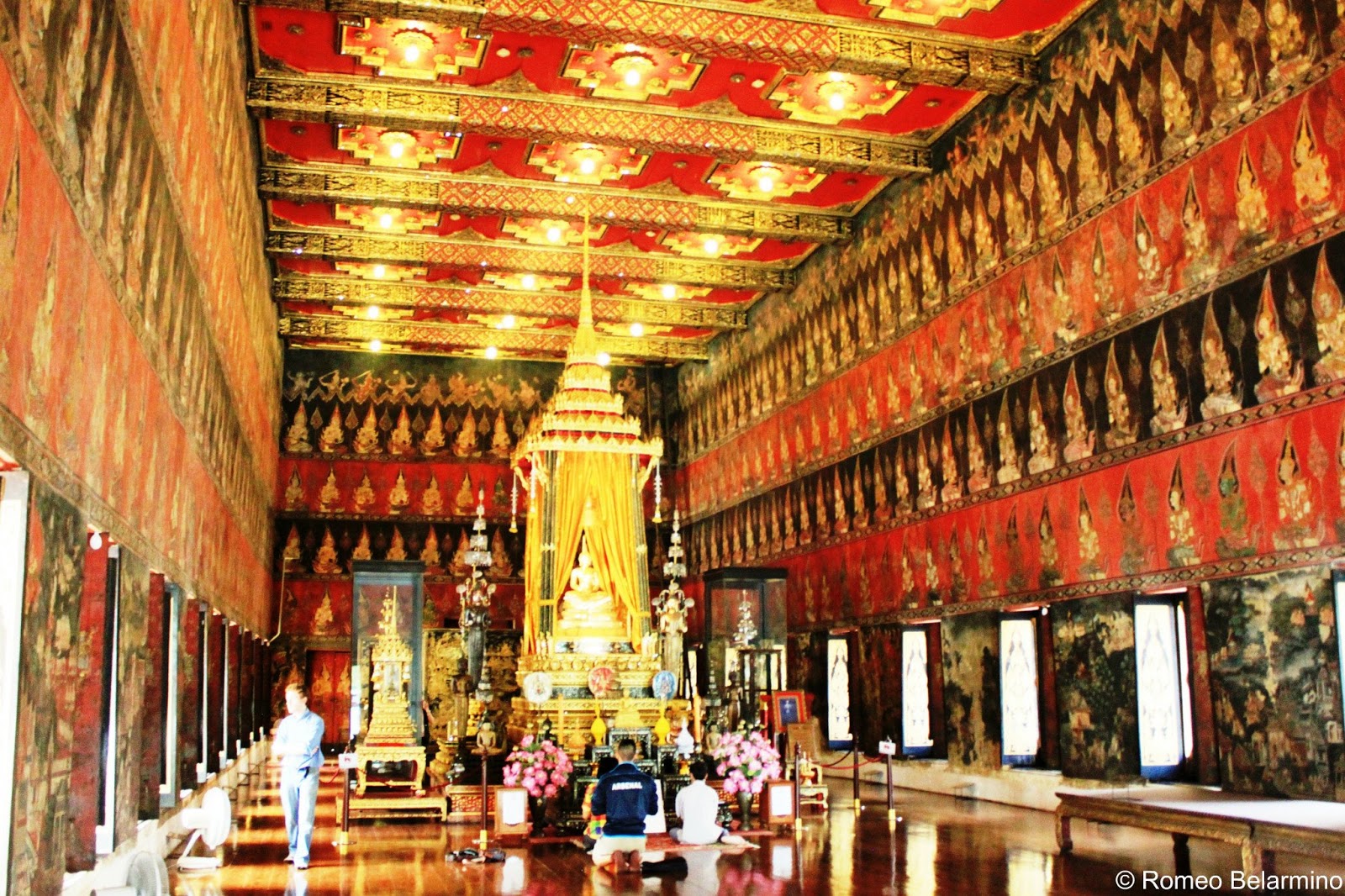When most people think of art history, the things that come to mind are the masterpieces by largely European men like Michelangelo and Da Vinci, or paintings representing various stories from the Bible.
Paintings in Thailand also began, and often still, focus on the religious myths of the area, depicting stories from the life of the Buddha or of the various Hindu gods and goddesses that have influenced life here. Some of the best places to see Thai paintings are wats, on the walls of the ceremonial halls. But what are some of the characteristics of Thai art?
Stories Depicted in the Murals
The paintings at wats are typically murals, beginning around shoulder height and stretching up to the ceiling of the building.
On the sides of the ceremonial hall, the images will depict episodes from the Buddha’s life or the Ramakien. The tableau that is closest to the Buddha image is often the Assault of Mara, in which Mara unsuccessfully attempted to tempt the Buddha and represents the triumph of good over evil.
Behind the Buddha image is typically scenes of the Buddhist cosmos, including heaven and hell.

Use of Perspective
Traditional Thai paintings, like many traditional Asian paintings and ancient Egyptian art, do not utilize perspective, nor does it use shadows.
The viewer is most often positioned above the scene, looking down at what is being depicted. In temples that have windows, the windows present a natural story break, so sometimes the same characters will be on either side, depicting a new scene or story.
In temples that don’t have windows, lines were painted to separate the scenes, which later evolved into rows of trees or walls.

Scale of the Subjects in the Painting
The figures that are painted are sized according to their level of importance – the more important a character is, the bigger they are depicted. Distance is shown by overlapping elements of the scene.
While paintings are intrinsically a static image, Thai paintings are not meant to show time stopped at a particular moment. The figures are arranged and posed in ways that are evocative of traditional Thai dancing, which makes certain emotions and roles easily identifiable to the familiar viewer.

Use of Line and Color in Thai Paintings
The lines used are smooth contours and are achieved by the artists making a stencil and then a bag of chalk is banged on the wall, so that when the stencil is removed, a smooth line is left behind.
The figures are then filled in with a flat color and finally the decorative elements filled in last, with the accessories of the figures often applied in gold leaf and then outlined with red.
The backgrounds of the tableaus are very generalized, often not considered an integral part of the story.

Temples with the Best Examples of Thai Murals
Places to check out some traditional Thai mural paintings include Wat Bowonniwet, Wat Chong Nonsi, Buddhaisawan in the National Museum, Wat Suthat and Wat Suwannaram, all in and around Bangkok.
Evolving Thai Artistic Styles
As globalization has reached its tendrils around the world, so has more modern and Western styles of painting made their way to Thailand.
Perspective, shading and shadows have all been techniques adopted since about the 19th century.
However, even with more modern and post-modern painting styles, religious stories and figures are still popular subjects. Wat Rong Khun, or the White Temple is definitely one of these. Wat Tritosathep in Bangkok, while still being completed is also considered a modern masterpiece of Thai art.

